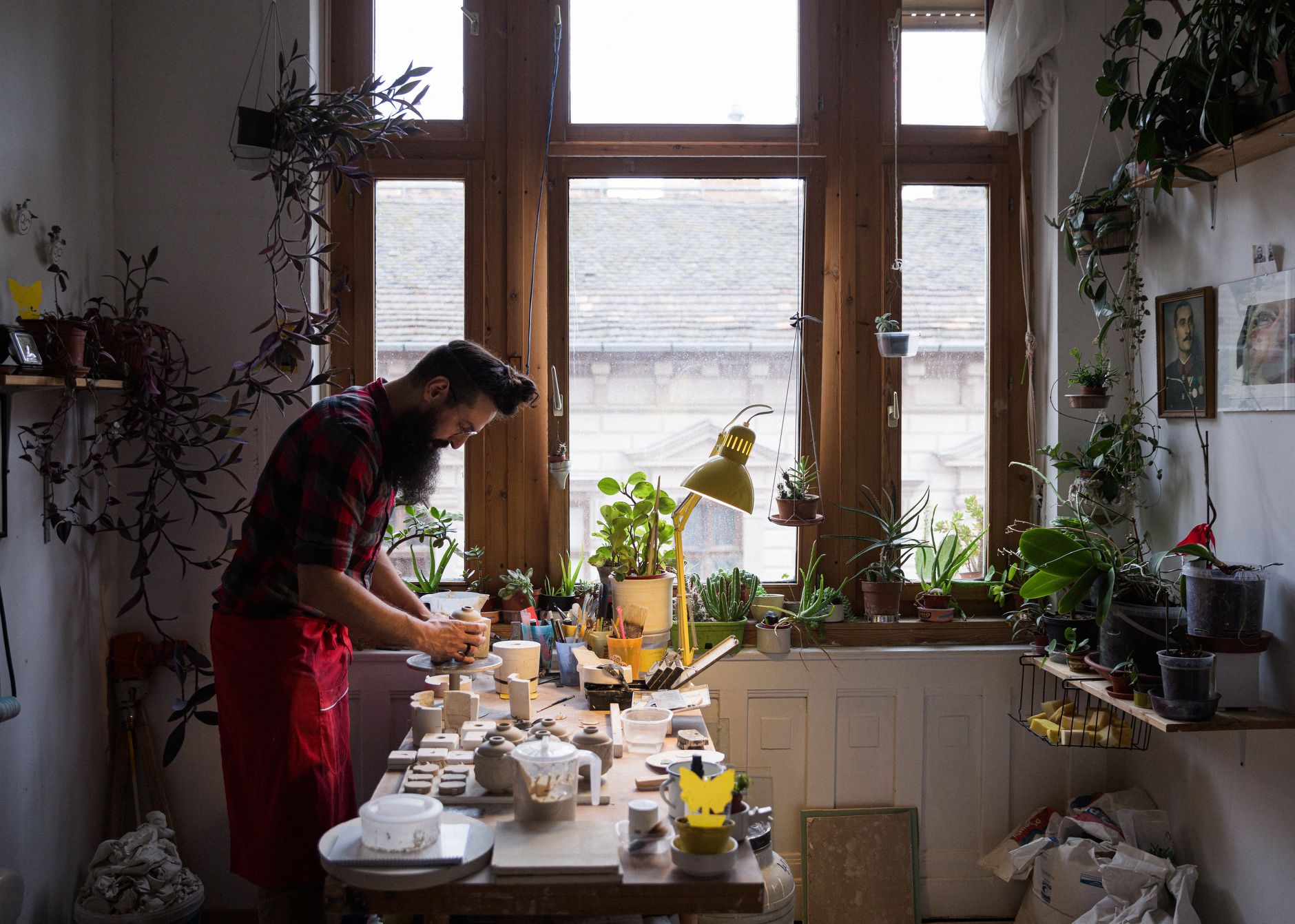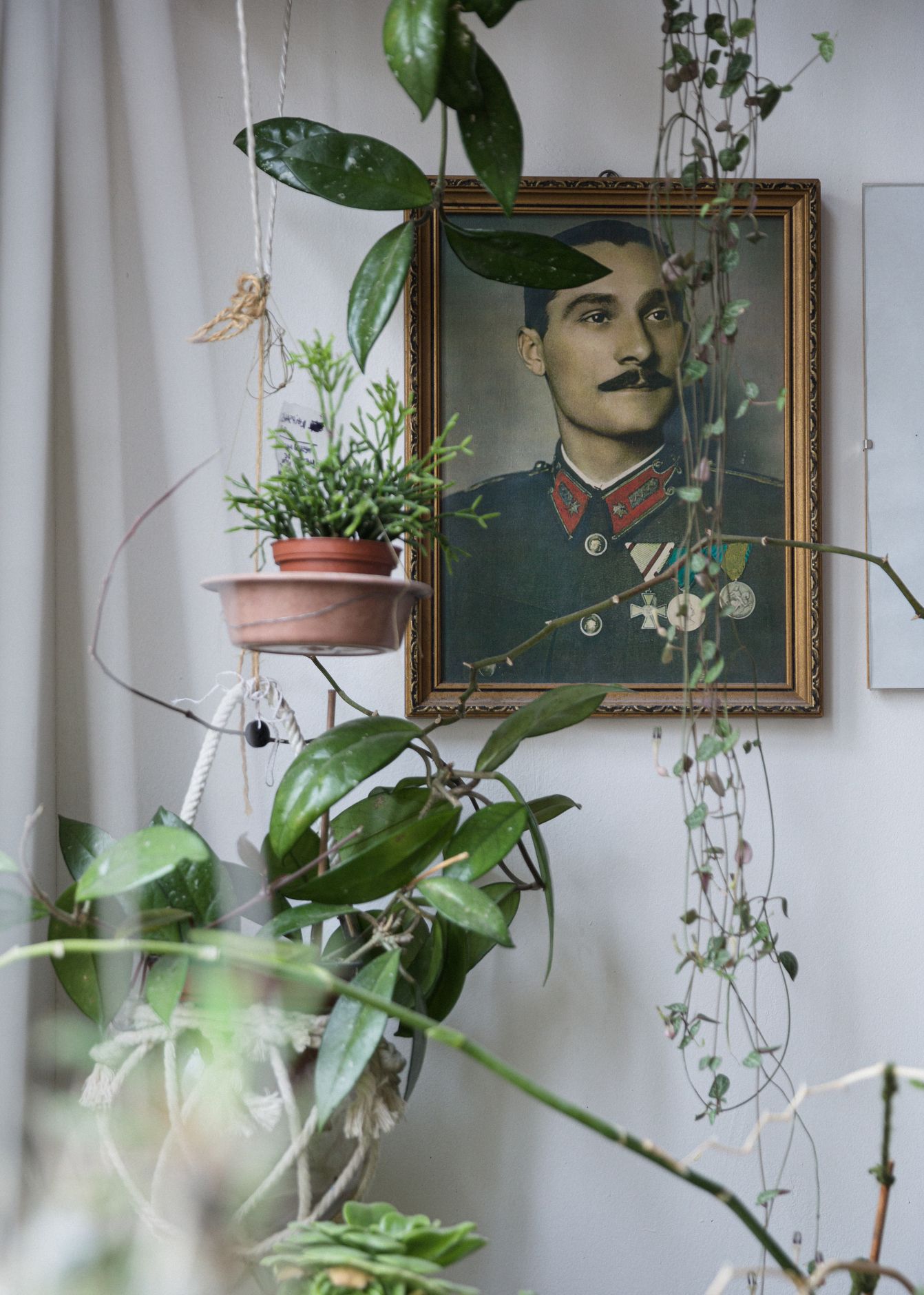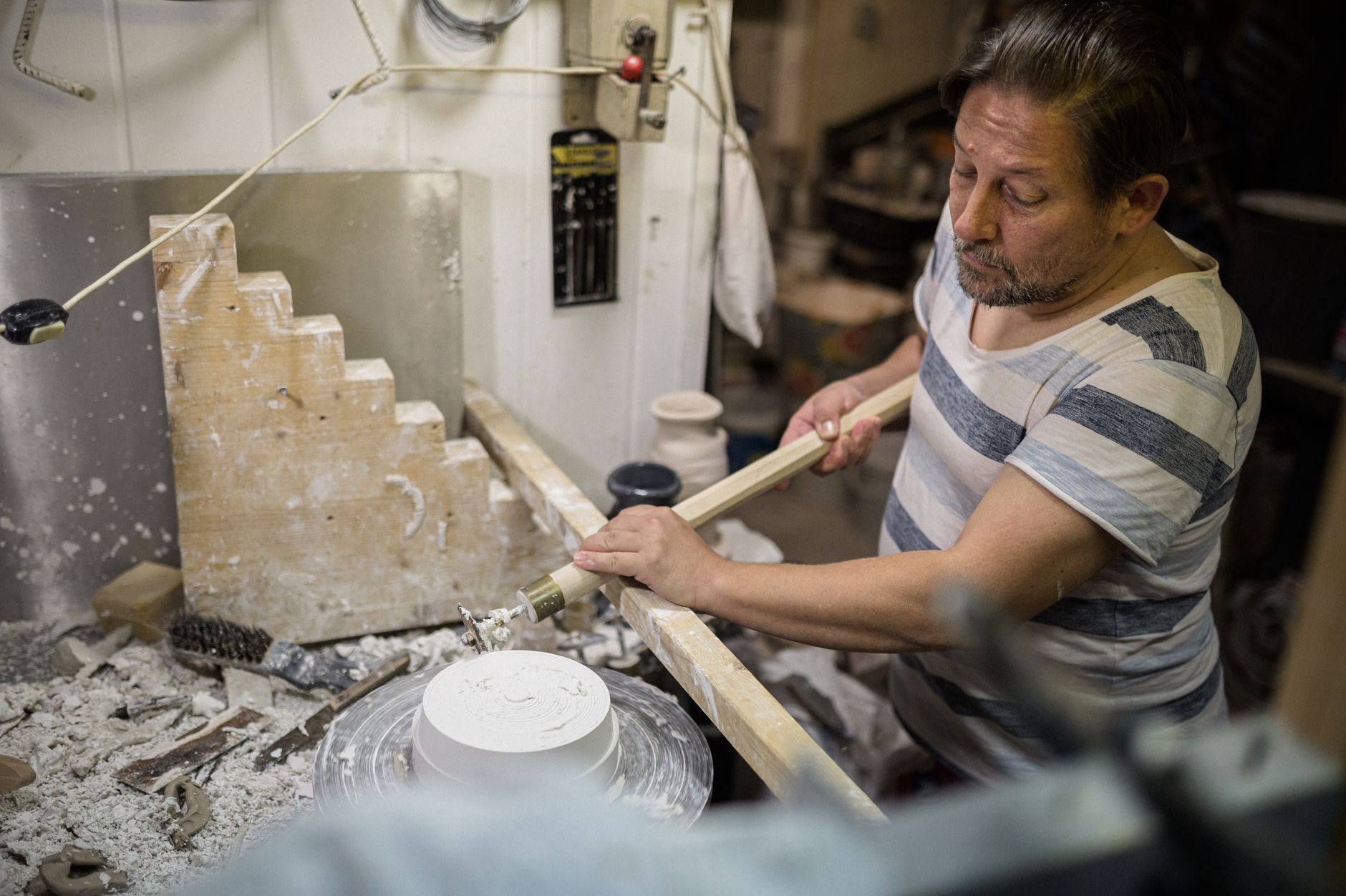Without a kiln of his own, Balázs Botos used to seek out other designers for contract firing, but now he has found a partner with whom he can work with mutual support. This is Gyula Mihály, a silicate design artist, and his unusual workshop, where there are many other treasures besides casting molds. Let’s see!
Although in previous episodes of “Designers and Manufacturers” we have introduced duos mostly where there is a clear separation of designer and manufacturer, this time we will be talking about a duo who work together in a slightly different set-up, but with a greater understanding. The symbiotic relationship between designer Balázs Botos and silicate designer Gyula Mihály is based on trust and professional humility: Balázs builds his own brand, using not only Gyula’s kiln but also his expertise, and Gyula can count on Balázs’ help in the production of different product types.


We are in Víg Street near Rákóczi Square, in the apartment of Balázs and his family, where the porcelain objects of Balázs Botos Design are born, but the finishing steps are happening at Gyula’s place. The repertoire includes a variety of objects—rings, brooches, necklaces, cups, knife sharpeners, vases—that grab our attention with their puritan whiteness or their bright colors. What they also share in many cases is humor: one brooch collection features hand-drawn, frighteningly funny faces reminiscent of Tim Burton films, but there are also donut-shaped rings.



When looking at the “Rocky” vase from Balázs, we might well ask: “How was this made?”. The vase does indeed look as if the designer had attacked it with a chisel: in addition to the smooth, snow-white surface that is common for porcelain objects, here we can see an unusual, rustic finish. It is partly true that it’s made by chiseling, but it is not done on the surface of the object itself: Balázs first makes the masterpiece, then takes a sample from it, and then uses this plaster mold again and again to make the other pieces (we were able to observe Balázs casting and removing a miniature version of the “Rocky” vase from the mold).



“The material is given, you have to adapt to it: with an assembled ceramic, there is less planning, but with a mold, you have to focus on the details,” says Balázs. “I like casting because it’s a very reproducible thing. I like that I can think in series. Of course, each piece is still a little different because after casting, I still touch it up and carve into it: for example, I remove the casting marks. So even though they are molded, each one can still be unique.”

“Jewelry is a great love,” admits Balázs, who graduated as a designer, but also has a jeweler’s degree. He fell in love with porcelain during university and still likes to stick to this material, but recently, he says, he has returned to the metallic direction (most recently, for example, he refined “rusty” metal files into brooches). “I like to combine the two materials, the two professions, in a way that they fit together organically,” he says.


Balázs is one of those designers who are true “all-rounders” within their own brand. He is responsible for managing the brand’s Instagram and Facebook pages, and the object photos are also taken here alongside the potter’s wheel—his partner, Hajnalka Harsányi, also helps with the pictures. Now they are aiming at launching a website—although he is basically satisfied with selling on Etsy, he also sees that it is time to level up with a website of his own. Balázs also revealed that the brand will soon become a family business when the range is expanded to include items made together with Hajni, and they will be able to share the tasks between them. So most of the processes are done here, but the firing is done in Gyula’s workshop (where the cleaning, the glazing and the gilding are also done).


Balázs and Gyula met in 2019 summer: back then, it was only about a simple rental. Balázs was teaching at a school in Budaörs at the time and mostly fired his porcelain objects in the workshops of other designers—Zoltán Lublóy, Enikő Kontor. But Gyula’s workshop was right here in the city; he didn’t have to go far, just to Csángó Street. After a while, Balázs offered to help him with his work—Gyula said yes, and Balázs left teaching and joined him in the workshop, to collaborate on the mass-producible ceramic objects of other designers, and to meet specific customer requests that Gyula has received, for example, from film projects.

Gyula has good relations with colleagues working in ceramics factories and with contemporary Hungarian ceramists—his expertise is passed down by word—and many people turn to him for advice. His work is recognized and appreciated by all in the profession, but he avoids the spotlight. Although his 2007 diploma project at MOME once attracted a lot of attention: it was a special dinner set for people with a reduced quality of life. Based on his research in hospitals’ geriatric and rehabilitation care units, Gyula designed the ergonomic and hygienic set, which won the Quality Concept Award at the 2008 BIO 21 design biennale in Ljubljana. Gyula created the prototype of the porcelain dinner and glass set at the Zsolnay porcelain factory for the Hollóházi Porcelain Factory, but unfortunately, it never went into actual production.


Since then, he has been working in this workshop for thirteen years, where he receives the broadest possible range of requests. “I’m a specialist: people approach me with jobs that no one else can do. Either because of the speed of the work, the quality of the work or the small quantity,” says Gyula. Recently, he was asked to work on a film production abroad, where Gyula and his family had to produce a complete collection (about one hundred and fifty objects!) in two weeks, which will appear as the work of the ceramist in the film.

In the tiny workshop, in this seemingly chaotic milieu, not only the molds of various designers are lined up—but pieces of Gyula’s personal object collection also pop up here and there. For a long time, we didn’t dare to ask about the origin of the painting resting near the old bicycle wheels and copper chalices, but as we later found out, it is an original Moholy-Nagy (but more on that another time—the Ed.).


The life of a ceramic object begins on this lathe, made in 1952, where the actual models are created—based on the technical drawings and templates already made: the solidified special plaster mass is placed on the machine, the motor starts the rotating mechanism, and Gyula shapes the final form of the object with the different-ended knives.
Balázs and Gyula share the work processes brotherly, experimenting together or pouring, firing and glazing as needed. In essence, whether it’s a Balázs Botos Design piece or a custom order that leaves the kiln, the main thing is that the end result is of the highest possible quality.




Photos: Balázs Mohai
Balázs Botos Design | Facebook | Instagram

Wooden house inspired by characteristic Polish houses

All countries should connect to the space sector within their capabilities—Orsolya Ferencz on the HUNOR space program










